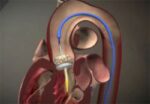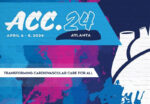Original title: Effect of ticagrelor on the outcomes of patients with prior coronary artery bypass grafo surgery: Inssights from th PLATelet inhibition and patients outcomes (PLATO) trial. Reference: Emmanouil S. Brilakis, et al. Am Heart J 2013;166:474-80 The bridge venous occlusion is a common finding in patients with previous CABG presenting with acute coronary syndrome without ST...
Coronary Obstruction after TAVI: dreaded, but rare and solvable
Original title: Coronary Obstruction After Transcatheter Aortic Valve Implantation. A Systematic Review. Reference: Henrique Barbosa Ribeiro et al. J Am Coll Cardiol Intv 2013. Article in press. In the context of Transcatheter Aortic Valve Implantation (TAVI) there can be complications such as conduction disturbances, bleeding, residual aortic insufficiency or vascular complications, all of which have been detailed with...
ACC 2024 | ORBITA-COSMIC
Coronary sinus reduction (CSR) is a relevant area of study for the treatment of refractory angina, with hopes of improving myocardial perfusion. However, to date, there are no conclusive data. The ORBITA-COSMIC study is a randomized, double-blind, placebo-controlled trial conducted at six centers in the UK. Researchers recruited patients with angina and chronic ischemia who...
ERCTO Registry: Current Results for Percutaneous Treatment of Chronic Total Occlusions
Chronic total occlusions (CTO) occur in up to 20% of patients undergoing diagnostic angiographic studies. Over the past two decades, the optimization of recanalization techniques, the development of new specialized devices, and improvement in operator skill have contributed to an increased procedural success rate, reaching 90%. However, specific complications such as collateral perforation and access...
Should We Treat Obstructive Coronary Artery Disease in TAVI?
Coronary artery disease, both obstructive and non-obstructive, often coexists with significant aortic stenosis. Therapeutic decision-making in this scenario remains controversial, not only regarding the need for treatment, but also about when it should be addressed, considering its pros and cons. Various analyses have yielded contradictory data, as most lesions are chronic and stable. Currently, the...
Long-term Results of Coronary Bifurcation Lesion Treatment in Diabetic Patients
The effects of diabetes on patients with coronary artery disease are well-known, and their outcomes after angioplasty are less favorable, with a higher rate of restenosis, recurrent acute myocardial infarction, and stent thrombosis. Despite advances in drug-eluting stents and procedural techniques, the treatment of coronary bifurcation lesions in diabetic patients shows less positive clinical outcomes...
Relationship between Distal Vessel Quality and Outcomes in the Treatment of Chronic Total Occlusions
Percutaneous treatment of chronic total occlusions has increase, and has become a a more habitual therapeutic challenge. However, there is limited information on distal vessel quality and its association with outcomes and techniques. This variable appears to be excluded form CTO scores, except for the RECHARGE (REgistry of CrossBoss and Hybrid procedures in FrAnce, the...
Intervention in Patients with Takayasu Arteritis: Rescue Therapy or an Alternative Complementary to Immunosuppressive Therapy?
Takayasu arteritis (TAK) is an uncommon granulomatous large-vessel vasculitis that affects the aorta and its primary branches. The most frequently types of observed vascular compromise are obstructive lesions, and aneurysmal vascular lesions or dissections. In 2021, the American College of Rheumatology recommended not to implement percutaneous intervention (PI) with these patients and only use immunosuppressive...
Interventional cardiology: the most read articles of 2022 in solaci.org
Discover the most read scientific articles on interventional cardiology of 2022 in our website. The FDA Approves Intravascular Lithotripsy for Calcified Lesions The US Food and Drug Administration (FDA) has cleared the shockwave lithotripsy system to treat severely calcified plaque lesions. Is Epinephrine Superior to Adenosine in No-REFLOW? In patients with acute coronary syndrome, no-reflow prevalence is 32%. Different drugs—such as adenosine, verapamil,...
We Should Treat Significant Stable CAD in Patients Undergoing TAVR
Aortic stenosis is associated to significant coronary artery disease (CAD) in nearly 50% of cases. When we decide to treat aortic disease using surgery, it has been established we should also treat heart disease. However, when using transcatheter aortic valve replacement (TAVR), this is still unclear, given that in many occasions we see stable lesions...








